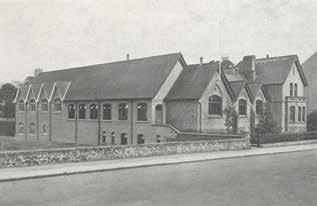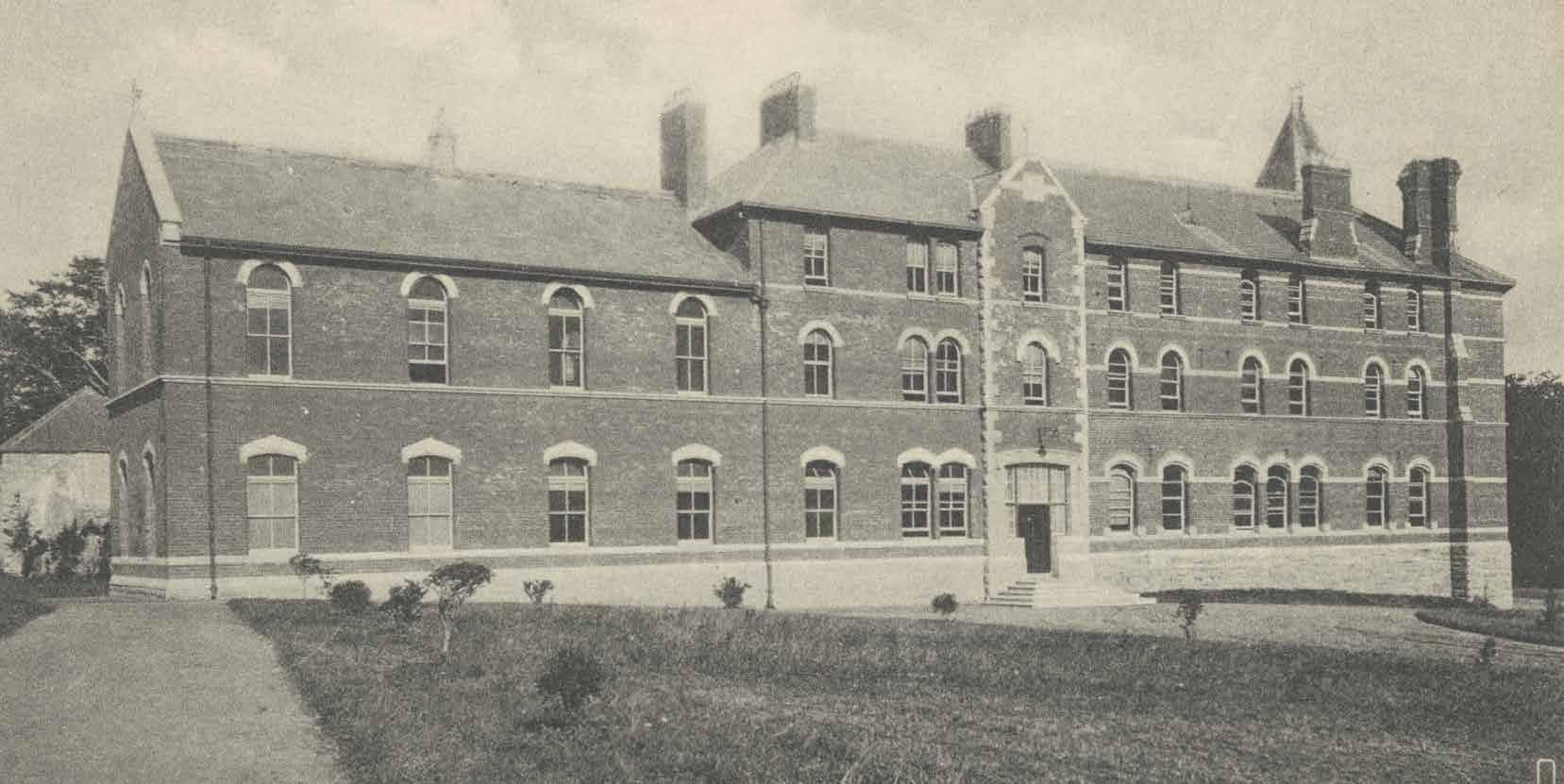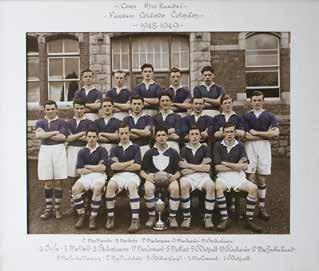
6 minute read
History of Non-Segregated Secondary Education
in Newry
Joanne Cummins
Newry High School celebrates its 50th anniversary this year. However, the origins of the school extend back much earlier to the late 19th century.
In the mid 19th century, Newry had a number of private schools. From 1858 there were calls for a state supported scheme of intermediate, non denominational education to bridge the gap between elementary and university education. As an important commercial town, Newry had need of an education system to prepare middle class pupils ‘for public service at home and abroad, for professional and mercantile life and for higher classes of industrial pursuits’.
In 1859 a deputation of gentlemen from the north of Ireland met with the Lord Lieutenant in Dublin to press the issue, with James McGeorge representing the interests of Newry.
The Intermediate Education (Ireland) Bill was finally passed in 1878. The Intermediate Board organised examinations, ensured uniform standards and paid results fees to successful school managers and prizes and exhibitions (scholarships) to successful candidates. They did not fund school buildings or pay teachers salaries. Newry Intermediate School was established in Corry Square with the Earl of Kilmorey as its patron and Henry Thompson, MP as vice-Patron. In June 1891 the school was destroyed by a fire and was transferred to Bank Parade and then to a lecture hall at Downshire Road Presbyterian Church. A new school and teacher’s residence was built on the Downshire Road in the mid 1890s.
In 1948 the school changed its name to Newry Grammar School. By 1953, with over 350 pupils, the school was hampered by a lack of adequate space, facilities and playing fields. Premises in Downshire Road and Windsor Bank were being used for classes and the staff room used as a classroom.

On the 1st September 1960 Newry County Intermediate School at Ashgrove was opened with 394 pupils on the register. Also known as Ashgrove Secondary Intermediate or the ‘Inter’, the school was purpose built to provide a new concept in education; education according to age, aptitude and ability, with a focus on training pupils in practical skills. The pupils even carried out grounds maintenance and grew vegetables.
In 1966, Ashgrove Secondary Intermediate and Newry Grammar School amalgamated to form Newry High School, with 860 pupils and 48 members of staff. In his report of 1966/67 Head Master Mr J.M. Clements described the new school as, “...one of the first schools of its kind, and, we hope, due to add to the history of education in the Province. . . The High School is concerned with producing young people with open, yet critical minds, of goodwill towards their fellows of every kind of background, with a readiness to cooperate in a spirit of friendship or, at least, of understanding.” The Minister of Education for Northern Ireland, Captain W. Long, addressed the school on their first school prize day in April 1968.
The school operated between both sites for seven years, with some pupils travelling between Downshire Road and Ashgrove for lessons until new buildings were added in 1973 to accommodate the larger school at Ashgrove.
Growing up in the Abbey Christian Brother’s Grammar School Greag Mac t’Saoir


Like many other Newry boys I spent a large part of my teenage years in the Abbey Christian Brothers Grammar School, perched above the town on Courtenay Hill. My perspective on my time there was coloured by the fact that my father Eugene McAteer, nicknamed ‘Gene Genie’ after the Bowie song, sometimes called ‘Rubiks Cube’ on account of his stocky build, was the school caretaker.
When the school opened its doors to its first pupils in 1966 my father had already worked there for three years as one of Felix O’Hare’s builders. He had become a father in 1963 and would have been glad of the steady work that such an extensive project promised. As the build progressed he attended many site meetings with the then principal Brother Newell on whom he clearly made an impression. A devout Catholic and a well known Irish dancer, he fitted the Christian Brothers’ twin preoccupations with Irish culture and conservative Catholicism. He knew the building from the girders out, so Brother Newell had good reason to recruit him as the school’s first caretaker.
My mother also worked, so from a young age I spent my Saturdays and holidays in the boiler house where my father had a workshop. I learned how to rivet lockers, glaze windows, varnish desks and reset the huge asbestos clad boilers that drove the school’s heating supply.
Pupils would have been familiar with the teachers and known them mostly by their nicknames.
I also knew a host of other school staff. When I started my first summer job there at the age of thirteen I worked alongside people like Paddy Campbell and later Matt McAteer, the assistant caretakers, Jimmy Smith the gardener, the lab technicians – Joe Canavan who was the lighting technician with Newpoint Players before landing a job in RTE, Anne Lappin and Bernie Finnegan who kept the science laboratories on track.
I also knew Maurice Toner and Geraldine Kane in the principal’s office, the dinner ladies, cleaners and the main office staff Pat Crawley, Mary and Tess who made sure, crucially, that everyone got paid. All these played their own parts, cogs in the complex machinery that made sure that the pupils enrolled at the school got a decent education.
St. Colman’s College, Newry Martin Goss
The Newry Telegraph of May 6th 1823, announced the opening of the Dromore Diocesan School, under the presidency of Rev John Sproule Keenan. On May 12th, the school began to operate in a “commodious house” in William Street. Its students soon numbered 40, paying an annual fee of £10 with the added attraction of cold baths “easily obtainable as the tide comes near the seminary”. However, the need for further accommodation led to the renting of a building at Violet Hill in1829. The Bishop of Dromore, Dr Michael Blake purchased the Violet Hill property on September 23rd 1834, for the nominal sum of 10 shillings and so began the long association of St Colman’s College, seminary to the Diocese of Dromore, with the Violet Hill site.
As the 1944 history of the College noted; “… Immediately upon the purchase of the building as a seminary, Dr Blake . . . set about the extension of the College. Within a year the new eastern front, in which the bishop himself was to reside, was erected and a few years later the original college chapel was added. …”
In 1875 plans were drawn up for the erection of the lower half of the present frontage and of the College Tower. Known as the “new House”, it was complete by 1879, and, viewed from the Belfast Road, remains one of the iconic images of St Colman’s College.


The next phase of College building in the 1920-1922 scheme extended the “New House” westwards adding the wing that extends from the current main entrance to the chapel steps. According to the 1944 History; “… (the) entire new set of buildings, embracing study hall, temporary Chapel, refectory, and dormitories may be said to have resulted in the complete transformation of the original College. …”
1936-38 marked the commencement of the final phase of that building programme. The new Chapel of Mary, the Immaculate Mother of God, was erected at the western end of the present frontage and solemnly consecrated by Dr Mulhern on Wednesday 26th October 1938.
The transition to a day-school, the demands of the curriculum and growing numbers have necessitated the continued expansion of the College facilities and some five building schemes since 1958 have greatly enlarged St Colman’s College’s “imprint” on the Violet Hill site.
The complete re-development of the playing fields in the late 1990s improved the College’s sporting facilities. The provision of a flood-lit third-generation full size Gaelic sports pitch, the upgrading of the existing pitches, a golf practice area and an athletics track and facilities on the College site in co-operation with Sport NI and the former Newry & Mourne District Council have all been completed.
St Colman’s College at Violet Hill has expanded beyond the wildest dreams of its founders on this site almost 200 years ago and now stands magnificently placed to deliver the modern curriculum in all its varieties and to meet whatever challenges the education future may bring. Yet, the opening announcement’s mission statement of 1823 still provides St Colman’s College with its raison d’etre; “… The great end of education is to make us better men and better Christians – that howmuchsoever the mind may be enlightened, if it is not improved and directed to the great moral and religious duties, the principal object is neglected. To form and guide the tender mind in the pursuit of truth- to endeavour to impress it with a sense of religion - is the laborious yet pleasing duty of the instructor of Youth. …”
This is the annual Ulster Colleges Senior Football competition, first held in 1923. St Colman’s College have won this nineteen times, the highest number of wins for any school in Ulster Courtesy of St. Colman’s College





